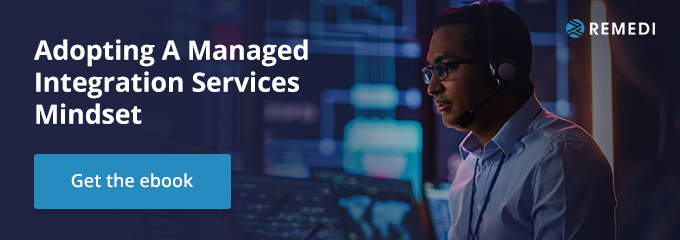
This is the second article in our series, “The Human Side of Modernization.” This article explains why we believe that empathy is an essential quality for IT leaders who seek to drive the next wave of technology investments in their organizations, as well as the integration specialists they’ll rely on to bring that technology online. If you missed the first installment and want to read it first, click here.
As critical as it is to select the best integration technology you can afford when it comes to modernizing your data transformation and exchange environment, investing in technology alone will not guarantee a smooth migration or a successful outcome.
Modernizing your B2B integration toolset requires integration specialists who understand the potential benefits of investing in transformative technology as well as the potential complexities that come along too. For example, the people leading the effort need to be able to grasp that deciding to migrate to a new ERP could increase operational efficiency but also create discomfort for those who will have to learn new workflows.
Not to mention the downstream impact on the team that will have to reengineer new integration patterns without creating trading partner disruption.
That requires a level of empathy that’s not typically expected of IT teams. But without specialists with the right mix of technical skills and empathy to bring your vision for modernization to life, investing in the best integration tools money can buy could wind up adding complexity to your current processes without adding real value.
Why Empathy Matters to IT Leaders—and to Companies
Most would agree that empathy is an obvious requirement for customer-facing roles like sales or support, but not necessarily that it can make IT leaders and their teams more effective. Let’s look at a hypothetical example inspired by a real-world issue.
Two companies in the marketing services industry are facing a similar challenge with their remote workforces. No matter what the companies do, a high percentage of their employees routinely miss the deadline for submitting their billable hours. The problem is bigger than just an annoyance for managers who are forced to nag teams to comply.
The reporting lags create billing delays and occasional cash flow issues and complicate P&L analysis. Threats of disciplinary action, including delayed paychecks, have proven ineffective. In fact, many of the offenders admit they put off entering their hours until the last minute because the process is frustrating, inconvenient, and time-consuming.
When presented with employee complaints, Company A’s IT director becomes defensive and claims that the interface is simple enough for “those who bother to read the manual.” He adds that the application’s ability to provide data security and control unauthorized access outweighs “whatever slight pain” users are feeling.
Meanwhile, the IT director at Company B decides to view the issue through the eyes of the user. Their DevOps team talks to employees throughout the company and quickly realizes that streamlining the interface and creating a mobile version would make it easier and faster for employees to book their time. And by leveraging APIs to connect with finance, they see a way to give accounts receivable the tools to accelerate invoicing and decrease payment delays.
Can Empathy Be Learned?
Empathy often gets confused with sympathy. They are similar, but they are not the same. Sympathy is being able to feel for someone, while empathy means the capacity to feel with someone.
There are two kinds of empathy, emotional empathy, and cognitive empathy. Emotional empathy is what happens when a friend tells you their dog was killed by a car and you feel sad because you’ve experienced a similar loss.
Cognitive empathy is more of a learned skill. With cognitive empathy, you gather data on how another person is likely to behave or respond and then try to see the world from their perspective. Cognitive empathy has long informed the work of professionals in fields like research, marketing, and UX design. Perhaps the easiest way for IT professionals to develop cognitive empathy is by using another critical skill, listening.
The good news is, practicing cognitive empathy is simple enough for anyone who wants to learn how. Books such as Indi Young’s Practical Empathy, available online from Rosenfeld Media, explain how to develop an empathy mindset. At a time when finance, marketing, and sales departments are exerting more influence over B2B technology investments, it’s never been more important to put yourself in another person’s shoes.
In fact, as an IT leader, you can’t guide your company toward solutions that can help it become more agile, profitable, and a pleasure to do business without being able to understand the thinking patterns and perspectives of customers, trading partners, and company influencers.



